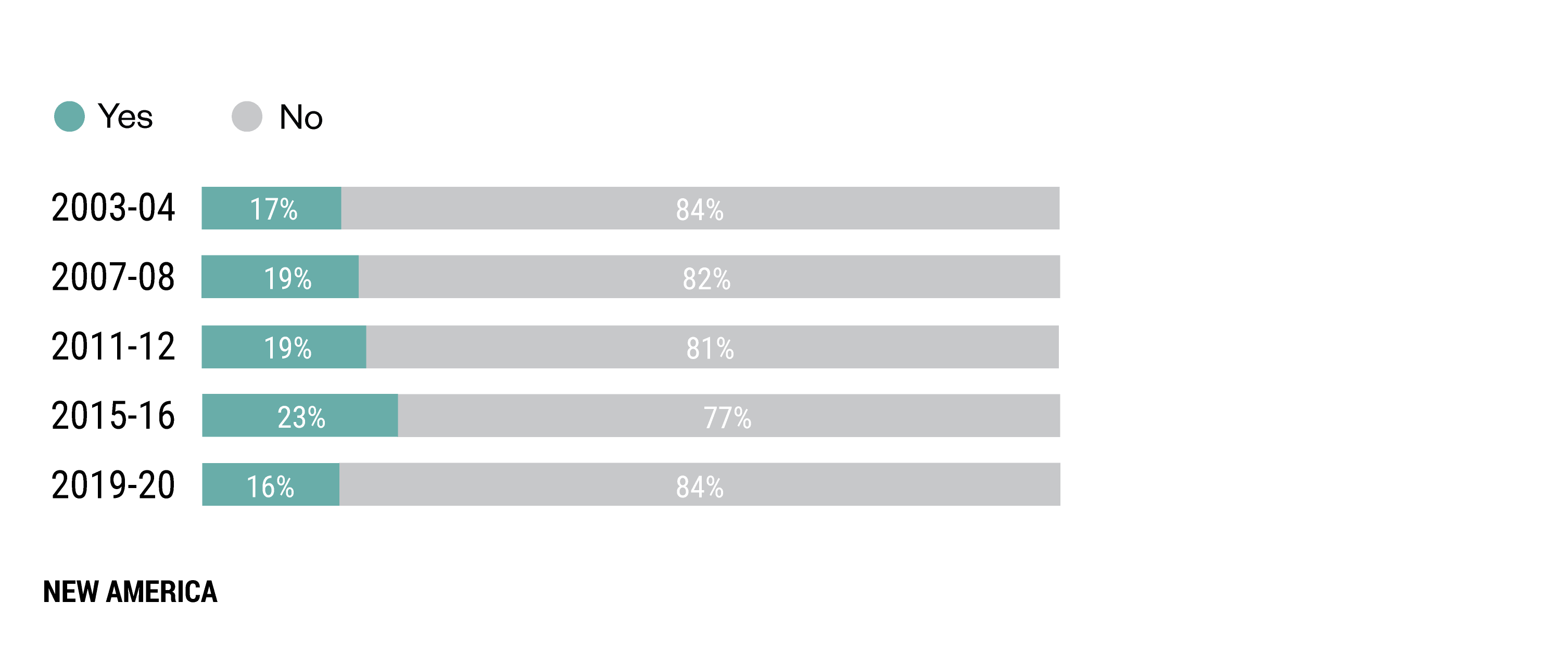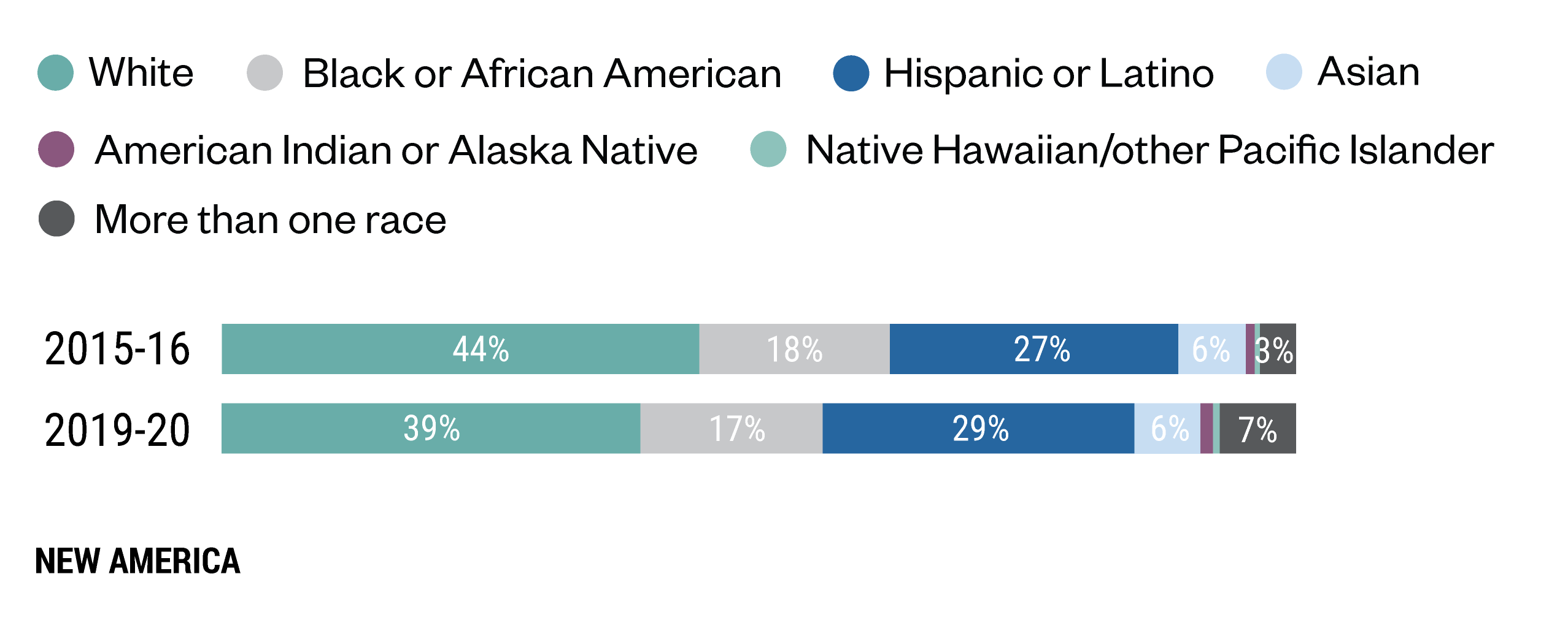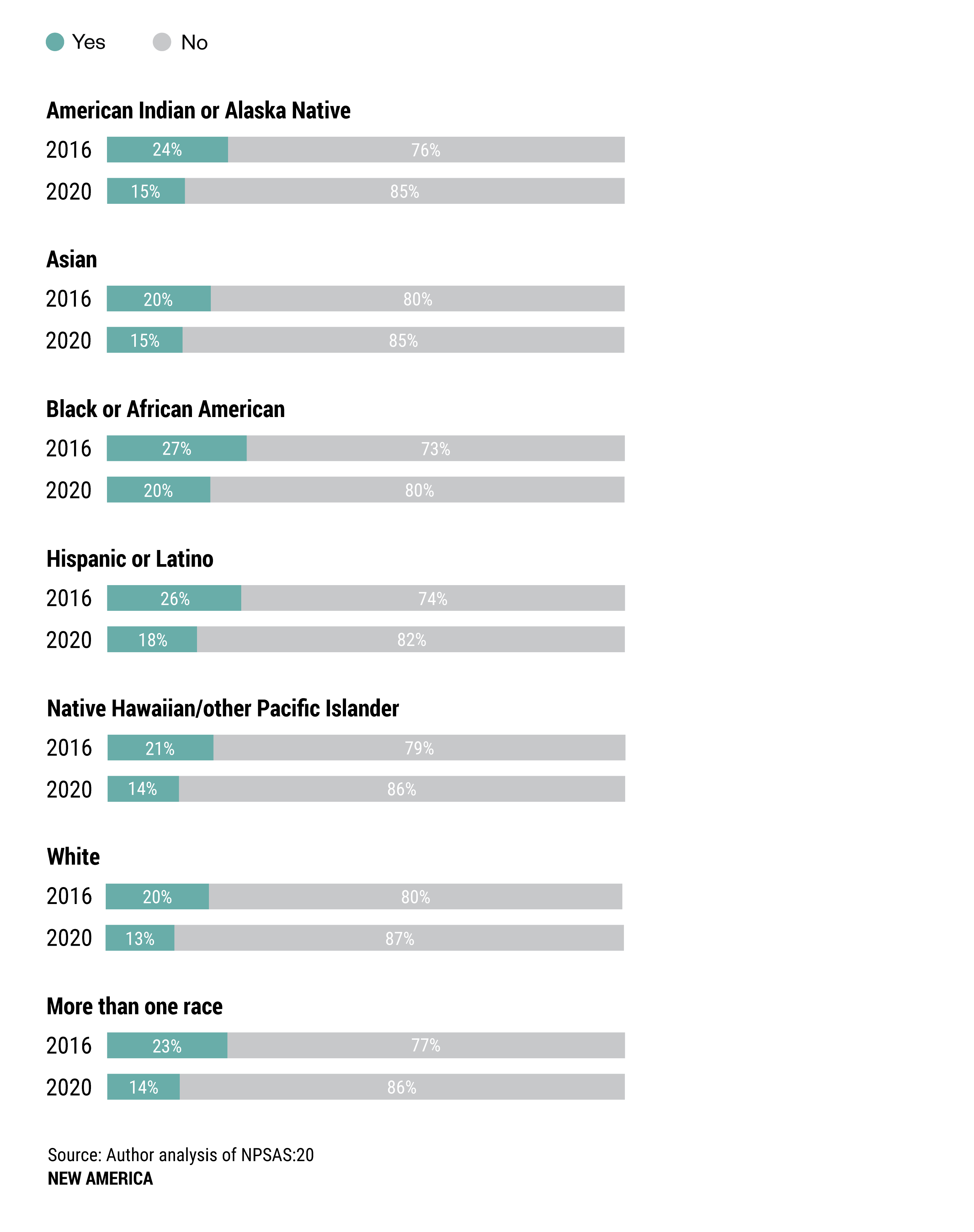Disparities in Enrollment Decline in Community College Developmental Education
By Tiffany Thai

Every year, community colleges enroll students who are not quite prepared for higher education. This lack of academic preparedness isn’t unexpected; underfunding and tracking practices in low-income and predominantly minoritized schools have left some low-income students and students of color less prepared than their peers. Combined with the impact of the pandemic on community colleges, students entering higher education may lack the crucial skills and college know-how necessary for long-term success.
Many colleges offer remediation to bridge the gap between students’ existing knowledge and what they are expected to know upon entering the classroom. The traditional prerequisite sequence, in which students must complete refresher courses before advancing to a college-level course, poses barriers: Some students fail the classes, and even successful students often do not enroll in subsequent courses. This approach has hindered academic progression for students underrepresented in higher education, especially Black and Latinx students who are placed in these courses more often and are also less likely to complete them than their peers. Enrolling in just one developmental course decreases students’ likelihood of advancing toward a degree.
Given these challenges, over half of U.S. states now mandate or recommend developmental education reform. This includes a shift toward corequisite support, which allows students to enroll directly in college-level courses and simultaneously receive additional academic support.
According to findings from New America, enrollment in remedial education has experienced a noticeable decline in recent years. However, it’s crucial to examine whether this decline was experienced equally by racial/ethnic groups and what, if any, disparities in enrollment by race/ethnicity continue to exist. Analyzing the demographic characteristics of students still enrolling in remedial education can provide insights into how recent reform efforts affect specific student populations.
The National Postsecondary Student Aid Study (NPSAS:20) provides nationally representative data on postsecondary students. According to the undergraduate survey, remedial or developmental education courses aim to strengthen skills before students take college-level coursework. Given this definition and the fact that students self-report as enrolled in remedial education, it’s likely that remedial course enrollments may not always include students enrolled in corequisite courses, which may lead to an underestimation of the remediation rate.
Are you enrolled in a remedial course?
 In the 2019–20 academic year, there was a notable departure from the longstanding trend of increasing enrollment in remedial courses. After nearly two decades of growth, the percentage of community college students enrolled in remedial coursework dropped from 23% in 2015–16 to 16% in 2019–20. The period from 2016 to 2020 coincided with a great deal of reform to remediation that likely contributed to this decline.
In the 2019–20 academic year, there was a notable departure from the longstanding trend of increasing enrollment in remedial courses. After nearly two decades of growth, the percentage of community college students enrolled in remedial coursework dropped from 23% in 2015–16 to 16% in 2019–20. The period from 2016 to 2020 coincided with a great deal of reform to remediation that likely contributed to this decline.
In 2017, California Community Colleges enacted legislation mandating the use of evidence-based practices to increase the likelihood that a student will enter and complete transfer-level courses within their first year. While implementation varied across institutions, corequisite courses emerged as a notable component. Other states, including New York and Texas, adopted corequisites as the primary developmental model during this time.
At the same time, improved assessment and placement methods also increased the number of students directly enrolling in college-level coursework. In some states, such as North Carolina, corequisite courses were available as well.
Limitations of the NPSAS:20 item on remedial course enrollment make it challenging to determine whether the national enrollment decline is due to an increase in enrollment in corequisite courses or a reduction in the number of students taking remedial courses altogether. Notably, community college enrollment of Black students—who are more likely to be assessed as underprepared and to be relegated to remedial education—declined from 2015 to 2020.
Enrollment in remedial education (by race)
 When analyzing the demographic characteristics of students enrolled in remedial courses, we see that students of color continue to comprise the majority of enrollment. Latinx and Black students account for 29% and 17%, respectively, of remedial students despite making up 25.5% and 13% of the overall community college student population from 2019–20. In contrast, White students constitute 39% of remedial enrollees but 45% of community college enrollment.
When analyzing the demographic characteristics of students enrolled in remedial courses, we see that students of color continue to comprise the majority of enrollment. Latinx and Black students account for 29% and 17%, respectively, of remedial students despite making up 25.5% and 13% of the overall community college student population from 2019–20. In contrast, White students constitute 39% of remedial enrollees but 45% of community college enrollment.
While the proportions of White and Black students in developmental education are decreasing, the share of Latinx students has risen to 29%. This aligns with the increase of Latinx community college students, while community college enrollment among White and Black students has declined during this period.
Are you enrolled in a remedial course? (by race)
 When examining enrollment rates by race/ethnicity, we see that all groups experienced declines from 2016 to 2020. However, the changes are more pronounced for White students, whose enrollment decreased by 35%, compared to a 31% decrease for Latinx students and a 26% decrease for Black students. As has been the case historically, students of color remain more likely to enter remedial education than their White peers. In 2020, roughly one in five Black and Latinx students were enrolled in a remedial course, compared to less than one in eight White students.
When examining enrollment rates by race/ethnicity, we see that all groups experienced declines from 2016 to 2020. However, the changes are more pronounced for White students, whose enrollment decreased by 35%, compared to a 31% decrease for Latinx students and a 26% decrease for Black students. As has been the case historically, students of color remain more likely to enter remedial education than their White peers. In 2020, roughly one in five Black and Latinx students were enrolled in a remedial course, compared to less than one in eight White students.
Stalled or inconsistent reform efforts during the pandemic may contribute to these racial disparities. A recent report by FutureEd cites local autonomy as one barrier to scaling developmental education reform. In California, the implementation of AB 705, a landmark bill reforming developmental education, encountered resistance from faculty and administrators. Despite evidence indicating that traditional remedial courses do not meet the legal standard of maximizing completion, research found that colleges serving a large share of the state’s Black and Latinx students were more likely to maintain traditional remedial enrollments without a valid justification.
Broad-access institutions such as community colleges will continue to fulfill their mission and enroll students needing extra support to succeed in college-level courses. So, it’s crucial to scrutinize access to effective developmental education reforms and understand their impact on diverse student populations. Access to remedial reforms, including corequisite models, is essential for beginning to address the disparities faced by minoritized students entering college. Analyzing how corequisites are captured in the data is also vital. By identifying and tracking forms of remedial education, we gain valuable insights into the pathways students navigate in higher education.
Yet, access alone is not sufficient to ensure student success. Monitoring course retention and outcomes is equally important for understanding how well students progress and identifying areas where they may need additional support. By combining these efforts—ensuring access to effective reforms as a foundation for improved course outcomes—we can advance reforms leading to better and more equitable student outcomes.
Tiffany Thai is a senior program associate for the Center on Education and Labor team at New America.
